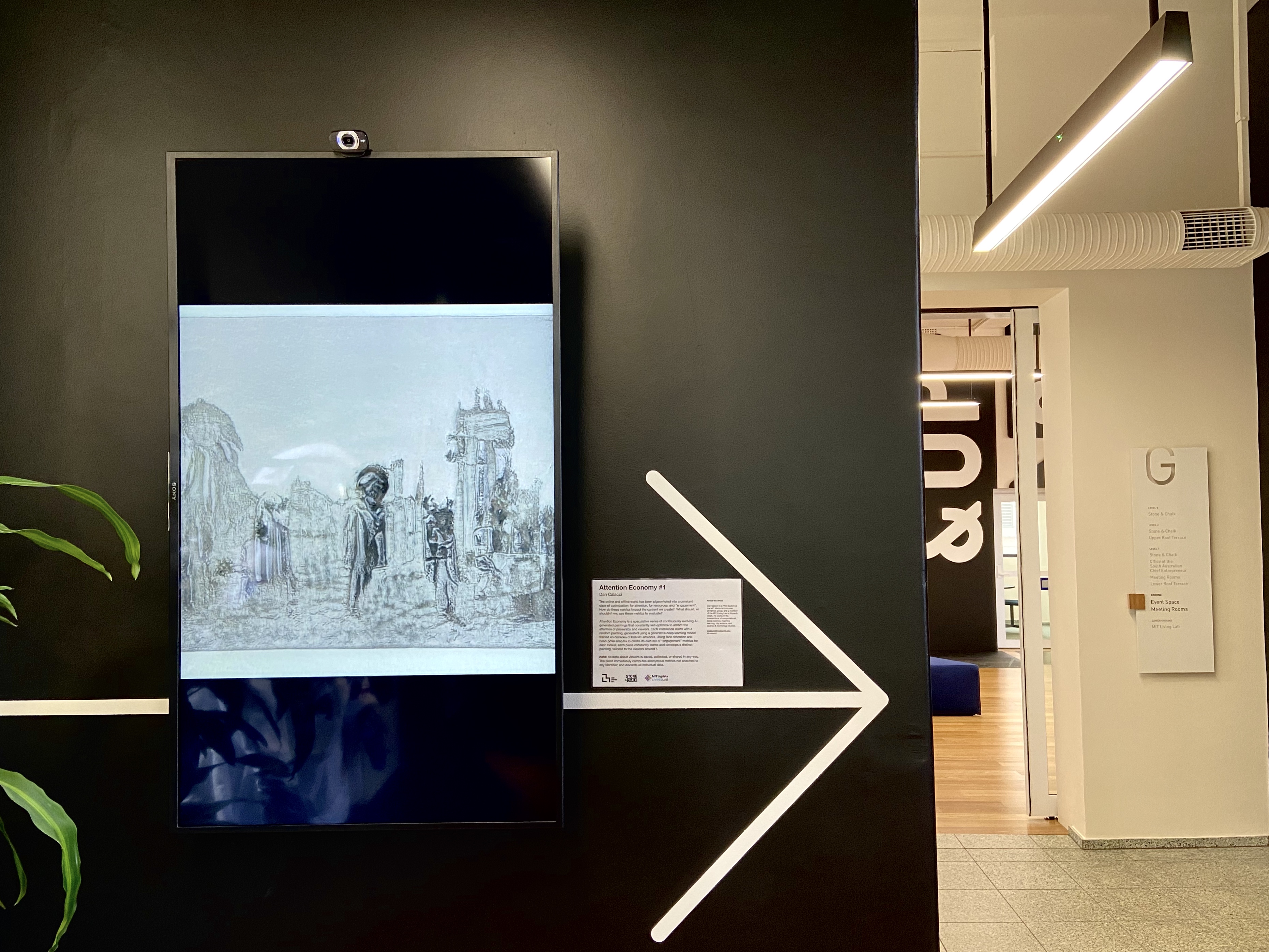Attention Economy #1
May 30, 2020
 The online and offline world has been pigeonholed into a constant state of optimization: for attention, resources, and “engagement”. How do these metrics impact the content we create? What should, or shouldn’t we, use them to evaluate?
The online and offline world has been pigeonholed into a constant state of optimization: for attention, resources, and “engagement”. How do these metrics impact the content we create? What should, or shouldn’t we, use them to evaluate?
Attention Economy is a speculative series of continuously-evolving A.I. generated paintings that constantly self-optimize to attract the attention of passerby and viewers. Each installation starts with a random painting, created using a generative deep learning model trained on decades of historic artworks. Using face detection and head-pose analysis to create its own set of “engagement” metrics for each viewer, each piece constantly learns and develops a distinct painting, tailored to the viewers around it.
Note: no data about viewers is saved, collected, or shared in any way. The piece immediately computes anonymous metrics not attached to any identifier, and discards all individual data.
